Shakhtar Donetsk and Europe’s coolest 4-2-3-1
Back in the spotlight far away from home: Eastern Ukrainian club with Brazilian players, coached by a Portuguese coach.
Unusual symbiosis between club and coach
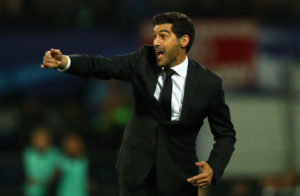
That’s how Paulo Fonseca looks like when he’s not Zorro. (Photo by Dean Mouhtaropoulos/Getty Images)
An appearance as Zorro made Paulo Fonseca famous, although the 44-year-old is not an actor but the coach of Ukrainian champions Shakhtar Donetsk. The big stage wasn’t something he was always destined for: With just 15 games as a player in Portuguese first division he really didn’t have a lot of public relevance. This also didn’t change when he started his coaching career in 2005, aged 32.
After learning his craft at several smaller clubs, he took over at FC Porto in 2013, but eventually was sacked after not even a full season in charge. Sitting in third place 11 points behind leaders Benfica, was too much of a blow for the club that won 9 of the last 11 league titles.
Paulo Fonseca took a step backward, signing once again for Paços Ferreira. He almost reached the Europa League with the underdog team and took over Sporting Braga for the next season which would become a breakthrough year for the young coach. They finished 4th in the league and were only beaten in the semi-final of the league cup by powerhouse Benfica. But this was nothing compared to winning the national cup against the same FC Porto that sacked Fonseca a little more than one year earlier.
In the Europa League, Braga also reached the quarter final but didn’t stand a chance there, losing 1:6 on aggregate. But the opponent still seemed to like something about the way they performed or the way they were set up. So Shakhtar Donetsk hired Paulo Fonseca as new head coach in 2016. There he became the successor of Mircea Lucescu who shaped the club like nobody else during his 12 years in charge.
The team from the eastern part of Ukraine came to fame when they bought vast numbers of South American, mainly Brazilian, players. Thanks to the generous funding of billionaire Rinat Akhmetov they were ready to pay any price to make the players forget about the tough Ukrainian winters. Only when the real top clubs from more Western areas of Europe knocked at the door, combining financial power with a lot of additional prestige, Shakhtar would eventually sell player like Douglas Costa for considerable sums. They could then go on to buy new South Americans using that money. Shakhtar was suddenly was considered as a stepping stone for young foreign players coming to Europe.
But history doesn’t exclude even the richest football clubs: When war broke out in (Eastern) Ukraine in 2014, the club escaped in the truest sense of the word. Home games were played in Lviv, Western Ukraine, from then on. Far away from the original home, nobody really cared about watching the team, the stadium stayed empty most of the time. Most of the players that already were part of Shakhtar’s team continued to do so, but new players didn’t want to join anymore amidst a threatening situation for everybody. The club would rather shift its focus to finding more local talent initiating a change of strategy.
This process was slowed down due to the collapse of Metalist Kharkiv, a club operating within a similar business model. Step by step Shakhtar didn’t only integrate the star players of the then league rival into their own roster but also plays its home games in Metalist’s former home stadium since the club’s closing in 2016. This doesn’t only fill Shakhtar’s own vacuum a bit but also the one of Ukraine’s second biggest city.
Just at this moment Paulo Fonseca entered centre-stage and was immediately eliminated from the Europa League, falling to Young Boys Bern with his new team. But things worked out slightly better in the national competitions: Shakhtar only lost twice in 32 league games and logically finished in first place, 13 points ahead of Dynamo Kiev. They also won 1:0 against the rivals from the capital in the cup final to secure the double.
More importantly, Shakhtar qualified for the group stage of the Champions League after one year of absence. They were consecutively drawn into one of the most attractive groups, including Manchester City, Napoli and Feyenoord. To outsiders, advancing to the next stage seemed so unlikely that Fonseca promised to his players that he would dress up as Zorro, if it would actually happen.
There he was on St. Nicholas’ day, wearing a black mask at the press conference after the home win against Manchester City. Suddenly, the cameras were pointing on Paulo Fonseca, a man born in the Portuguese colony Mozambique. He seemed relaxed or even relieved and joked with journalists while praising what was an “ideal game“ by his team.
Players win games, rosters win championships
For an ideal game, you need to use your players in an ideal way. In this regard, Paulo Fonseca doesn’t change a lot. Only suspensions forced him to pick a slightly different starting XI from time to time. Apart from that, there were only very few injuries which is probably also a result of the typical Portuguese tactical periodization. Or how Raymond Verheijen puts it: „Always play with your strongest team!“.
Andriy Pyatov is the goalkeeper of Shakhtar’s strongest team. The now 33-year-old doesn’t only have quite a high Goalimpact but really is a generally underrated player. In some aspects he even is the slightly buggy previous version of Manchester City’s Ederson. Sometimes he plays spectacular long balls while making use of short passes under pressure in other situations. Adding to that, he is quite active against the ball and impresses with good reflexes.
His public perception is often distorted by occasional lapses and by his general presence that rather resembles a bear and is mixed with some flair of clumsiness. But most of the time, this isn’t really something that actually affects his game.
In front of him, there’s another Goalimpact favourite playing as a central defender: Yaroslav Rakitskiy, 28 years old, also an Ukrainian national team player. He’s maybe the craziest of all passers in this position. He can play long balls that resemble Hail Marys in American Football, but also accurate laser passes between the lines. Overall, he’s very actively involved when his team is in possession of the ball while also remaining stable when the opponents attack.
The latter is also true for the player next to him, Ivan Ordets who is way less spectacular in possession but more actively involved in pressing thanks to him defending forward more often than his compatriot. Standing 6’4″ tall, he isn’t one of the fastest players in the team which shouldn’t be confused with slowness or immobility. The Georgian Davit Khocholova is a similarly stable replacement.
The position of the right full-back is traditionally occupied by 35-year-old captain Dario Srna. His main weapon is a strong right foot which enables him to execute all kinds of remarkable crosses. At the moment he is suspended for doping allegations which led to ongoing court hearings.
In five of the six Champions League group games he was replaced by Bogdan Butko who is clearly less influential in comparison to the Shakhtar legend. At best, he does his job in a typical manner while being solid and rather cautious. Once the pressure increases on or against the ball, he can be slightly overwhelmed on an international level.
Ismaily, a 28-year-old Brazilian who occupies the same position on the other side of the field, can be seen as totally different in this regard. He somehow resembles Napoli’s Faouzi Ghoulam like few others. With a lot of athleticism, he runs up and down on the left side, relentlessly attacking empty spaces either in wide areas or also with the use of diagonal runs inside. In doing so, he can also protect the ball against more than one opponent and beat several players at once.
The most important player in central midfield is Fred. At 24 he’s one of the younger players in Paulo Fonseca’s team. Recently, he was heavily linked with a move to Manchester City. Most obviously, Fred can simply run a lot which allows him to cover a lot of ground with, as well as against the ball. But he doesn’t just use his athletic abilities to make early runs towards the opponent’s goal all the time.
To the contrary, Fred often varies his role quite skillfully and occasionally even occupies the role of the deepest midfield player. From this position, as well as in transitional moments, his excellent vertical passing comes into play which is linked to his ability to constantly read which passing options might be available or not. At the same time, Fred can solve situations under sometimes heavy pressure quite well. His press resistance can only be compromised, if he overdoes it a bit and tries to beat the opponents too forcefully leading to technical errors.
Taras Stepanenko is the natural counterpart of Fred. He’s also quite versatile in his profile but less dominant in his style of play which is also emphasized by worse passing abilities. But his general characteristics allow him to react to the behavior of his team mates, especially Fred, in an adequate way. In possession as well as in pressing this often leads to Stepanenko playing in a deeper role from which he occasionally escapes through picking the right moments for rather forward-minded actions.
In front of the double pivot, there’s a fabulous Brazilian trio of combination dribblers. Bernard, 25 years old, is the first of them. He either plays centrally or on the left side and positions himself well within the combination structure of the team. At the same time, there are quite a few moments where he just tries to rummage through a situation which can look confusing at times.
Marlos, 29 years old, is the smoothest in his pure dribbling skills despite his greying hair. He even finds stable solutions against more than one opponent while regularly positioning himself a bit simpler within the team’s shape than his two companions.
Taison, 30 years old, has the biggest range of the three offensive midfielders and tends to move around the whole field. From a central position, he either drops to become an additional defensive midfielder in possession or he drops to the left side of the field, if not already starting from there. This active interpretation gives him an important role as a supporting player in the combination play of Shakhtar.
And then, there’s also the 21-year-old Ukrainian Kovalenko who moves as if he wants to join the combinations of the South Americans but eventually fails. Although he’s not a bad player, he lacks all the spectacular elements that the other three guys carry around at all times.
This is a bit different for Facundo Ferreyra, a 26-year-old Argentinian. He also embodies something totally different to Bernard Marlos and Taison but still fits them well in his role as central striker. He plays very effective and sometimes also really ambitious lay-offs while also moving to the wing areas if necessary. At the same time, his work rate in pressing and especially his backward pressing is exceptional – a striker most coaches would want to have in their roster.
You’ll never knock this medium block
Organization is a word that Paulo Fonseca likes. At least you can get this impression, when he talks about the good offensive and defensive organization of his team even dressed as Zorro. The word seems to play an important role in his definition of an “ideal game”.
A look at how Shakhtar Donetsk presses confirms this assumption. Based on a 4-2-3-1 structure, they create some kind of a 4-2-2-2 which can also be a rather usual 4-4-2 setup with a flat midfield four.
The centre of the field is well covered and access to spaces in this area ensured. Passes to opponent players in the middle oft he field are often times defended with the help of Fred pushing higher, but also with Taison and/or Ferreyra pressing backwards. Marlos will fall back to his side of the field rather passively more often than Bernard. On the other, Ismaily is rather used to defend a bit more aggressively and higher up the field, if the ball is played to his wing.
Stepanenko can also push up a bit by himself to put pressure on the ball or an immediately dangerous player, but most of the time his job is to fill gaps caused by the movements of other players. For example, he can also drop back into the back four, mainly as reaction to a centre back or full-back defending forwards.
Especially passes into the space in front of the back line are defended in an aggressive manner. The team squeezes up even more, once such a ball is played and creates very compact situations. The opponent can barely escape.
Even the players from the back four not directly involved in putting pressure on the ball push higher to leave possible vertical passing options offside. To balance the forward movements of certain players the closest winger can also drop back instead of a defensive midfielder.
As a general advantage of how Shakhtar lines up, variable pressing opportunities in the centre of the field arise. The often aggressive pressing movements of Fred can lead to a situational 4-3-2-1 which is asymmetric towards the ball side. In the second leg versus Feyenoord it was also created more centrally.
Ferreyra is ready to anticipate possible back passes while Fred directly pressures the ball carrier and Taison waits in a more central position to attack passes into this area from the blind side of the respective central midfielder. Like that, a triangle is created which can tighten abruptly. Thanks to this structure it’s also possible to combine quickly right after winning the ball. Shakhtar can advance quickly.
Furthermore, Taison who is positioned slightly deeper than Fred from time to time can drop into midfield, if it becomes necessary after a switch of play or a successful combination in the near half-space by the opponent. Especially in the latter case, the use of Taison’s backward pressing would even be demanded by the whole setup.
Backward pressing is also used even more methodically for some pressing traps. For example, the vertical passing lanes in the half-space are deliberately left open. Once the pass is played, the closest winger or defensive midfielder presses in a way that only a back pass to the six space remains possible.
At the same time, the players in the surrounding area close down further possible passing options, for example through using their cover shadows to prevent a progression in the same half-space or towards the middle. Because of this, Ferreyra can already expect and anticipate a pass towards the six space and immediately pick the right moment to press backwards. The player closest to him who faces the opponent’s goal can support him.
If necessary, he can join the pressing as a second player or can run through for a counter attack after his team mate wins the ball. Particularly Taison and the ball-far winger, who waits for a potential pressing success (mostly Marlos), play an important role for counter-attacks. Like that, Shakhtar is not only stable in their play against the ball, but is always ready to create attacks of their own from it.
From positions like this Fred can also play vertical passes behind the opponent’s back line or can play to Ismaily on the wing, if there’s any delay that makes an instant progression impossible.
After all, Shakhtar can’t only win the ball in central areas but they are also aware of potential open spaces on the wing areas which can quickly become pressing traps. This happens more frequently on the right side where Fred actively moves far inside the wing area. Stepanenko shifts through in the process to cover the centre at the same time.
Especially passes into evading movements of central or attacking midfielders can be defended effectively like that as the receiver faces the touch line and Ordets can step out of the back line to support. Shakhtar creates a close-meshed sickle structure around the opponents on the wing, which forces them to go outside with the ball or leads to an immediate ball win.
For this case, the ball-far winger positions himself slightly higher so that he can directly be found on the counter. Simultaneously, also either Ferreyra or Taison stays in a gambling position while the other one of the two is ready to attack and secure surprising rebounds or back passes. Once again, the hunt for the ball could be continued thanks to backward pressing.
It’s also part of Shakhtar’s repertoire to block the pass to the near half-space with two players being positioned close to each other. This guides the opponent to the wing where ideally a 2vs1 situation is created.
Concurrently, one of the more advanced players uses his cover shadow to prevent a direct pass to the centre. If this should become possible anyway because the ball-carrying centre-back or central midfielder slightly adjusts his position towards the outside, both of the defensive midfielders are also ready to put pressure on the receiving player.
Particularly Fred can be quite impressive in these situations using his great coordination. He practically already decides to defend one certain option. But if he recognizes during the execution of the pass that another opponent is the intended target, he is quick to change directions and can create access in an unexpected manner. This is kind of a defensive feint which can somehow be viewed as an individual pressing trap.
Based on how the game goes and how strong the opponent is, Shakhtar can also make use of a high press, switching to a more man-oriented way of defending. They cover some options closely while leaving others deliberately more open. Like that, the opponent is guided towards certain areas.
A reoccurring pattern is that the centre-back who is in possession of the ball is attacked with a run from the wing towards the centre, thus closing the passing lane to the outside. If a vertical pass into midfield is also covered, the only option is to either play a long ball or pass back to the goalkeeper. The player previously pressing the centre-back would run through to do the same with him while the striker that stayed in the centre would be ready to attack or intercept passes towards the six space.
Thanks to this kind of pressure, the opponent will predictably play towards the other side of the field, where Shakhtar’s (initially ball-far) winger can find the right moment to react on the goalkeeper’s body position and to run at the receiving player. All the other players, for example the full-back or one of the defensive midfielders push through towards this side of the field employing a situational 4-1-3-2 and marking the players who would be viable passing options.
Strengths that become weaknesses
But still: Compared to the, at times extraordinary medium block, Shakhtar’s higher press is noticeably worse. One important aspect to this is that you almost can’t be as compact when you press in the opponent’s half as in a medium block because the offside rule is only applied from the halfway line downward. Many of the pressing patterns are implicitly based on the players being close to each other. Such situations need to be created differently in the opponent’s half than in the deeper pressing (e.g. situational compactness versus general compactness).
Even in their own half the sometimes-forceful forward defending of Fred can be used against Shakhtar when he follows a dropping moment for a short moment and Marlos is rather focused on keeping the winger in his cover shadow. Then both of them neither block the passing lane through the half-space nor is the team ready to create the usual staggering in reaction to a pass into this area. This can already become problematic in small spaces against strong opponents.
On one hand, a 2vs1 on Butko could easily be created, if he doesn’t step up. If he does, the timing and the direction of him attacking the ball need to be good enough to prevent a pass towards the wing and consequently lead to an easy breakthrough. Butko can be quite successful in this, but more when a pressing situation is pre-planned rather than a result of not executing the plan perfectly.
On the other hand, Fred is relatively quick to react to such small mistakes and can compensate them thanks to his individual intensity. As a result, the player he previously marked might become the free player for an immediate back pass from the wing. He can’t be attacked as soon as needed, then, and is able to switch towards the other side where the opponent could use a dynamical or individual advantage to break through. Although Shakhtar defends switches of play quite well overall, with bigger space between the defending players the advantage on the near side could already be used much easier by the opponent.
The compactness missing in other moments can become too much in situations where the ball is on the wing, right at the edge of Shakhtar’s own third. This can also have an obvious negative impact that all opponents in the Champions League group stage used to their advantage in order to create dangerous situations close to the penalty area.
Even on the far side, the back four tries to position itself as high as possible and as close to the midfield as possible. If the opponent makes a run into depth in the ball-near half-space, the nearby centre-back tends to follow this movement because employing an offside trap would be quite risky as the opponent’s run already starts 10 to 15 metres away from the back four.
So, for a short moment the ball-near centre-back is positioned deeper than the other defenders. If there’s not enough pressure on the player in possession of the ball on the wing, an easy pass behind the back line can be executed. Thus, a late run of a centrally positioned player (mostly the striker), can beat the whole pressing action.
Once the ball reaches an area surrounding Shakhtar’s own penalty area, at least the rear part of the team tends to drop back quickly while other players stay in positions higher up the field for possible counter attacks. Fred again moves far away from the centre to press the ball or to support his team mates. Stepanenko now needs to evaluate whether he should do the same close to his own goal or whether he should continue to protect the centre.
Based on this decision he either allows the opponent to have a numerical superiority at the edge of the penalty area or the backfield stays open for passes (i.e. cut-backs) of the opponent from lateral zones. Shakhtar’s players in deeper positions generally can’t react to this decisively anymore and the backward pressing usually can’t work close to the own box like it does higher up the field.
The slightly advanced positioning of the ball-far winger can also become a problem next Shakhtar’s own box as it opens up a direct way for a switch from half-space to half-space for the opponent. Also runs from deeper starting positions aren’t followed consistently which leads to a vulnerability towards chip balls to the second post. Adding to that, the back four doesn’t cover the space behind their backs well enough in these situations but rather focuses on marking players in front of them.
Flexible central focus
Shakhtar Donetsk would be a way less interesting team, if it only had some special or well drilled elements in pressing. The team of Paulo Fonseca also has a lot to offer in possession of the ball, beginning with the general structure.
The base is a 4-2-3-1, a formation that is often interpreted as more of a 4-4-1-1. The wingers might tuck inside but more in relation to the respective full-back while striker and No. 10 interact with each other. Not so in Shakhtar’s case: They actually play with three No. 10s as attacking midfielders whose position is clearly between the lines.
From there, they can still move outside towards the wing areas, but this space is never left unoccupied. Holding the width is mainly the job of the full-backs. Striker and the central No. 10 still position themselves in relation to each other for not being on the same passing line. But Ferreyra’s role is clearly different from Taison’s. He is the main option to be found when escaping from certain situations and acts according to the behavior of all three No. 10s.
If we look at the deeper players, it’s also quite noticeable how both defensive midfielders oftentimes play very close to each other while the centre-backs spread out wider than them. Like that, they create a trapezoid which is narrower at the top than at the bottom and can also become a flat 4 at times with the centre-backs occupying the positions on the outside.
Thanks to this, the defensive midfielders don’t block direct passes towards the outside midfielders and can be used to attract the opponent centrally by themselves. By doing this, they can even widen possible passing lanes. At the same time, the proximity of the deep midfielders allows quick interactions between themselves and can also facilitate a further progression towards Ferreyra or the players around him with the wing areas being an alternative route.
Shakhtar doesn’t only have one structure to build up from. It’s more like a starting point to flexibly build a different staggering for implementing specific game plans or to execute actions based on the behavior of the respective opponent.
It’s not a rarity to see Paulo Fonseca’s team lined up in what is basically a 3-diamond-3 with the full-backs playing a bit of a deeper role compared to the classical variation of it. Stepanenko completely drops between the centre-backs. Fred stays in the spot of the defensive midfielders while the two outside midfielders effectively become central midfielders.
This 3-diamond-3 offers a fluent passage towards a 3-2-4-1 which is mainly related to the role of the central attacking midfielder. Taison (and also Bernard at times) likes to drop from this position while Fred stays a bit higher up the field and is able to also move to the side originally occupied by Stepanenko who once again positions himself between the centre-backs.
These flexible build-up formations can be used to attract the opponent to wide areas to return to the centre from there. For that, the ball-near outside midfielder can drop for example, to create a diamond structure on the side which offers enough options to combine without changing the point of the attack. This can even be enhanced by Ferreyra also moving to the same side. In case of losing the ball, there’s always enough cover to win it back or to drop quickly.
Because one defensive midfielder drops at the same time, the opponent wants to avoid backward passes to him. Moreover, three players hold their positions centrally as the ball-far full-back pushes up. While maintaining a focus on the areas around the ball, Shakhtar creates enough outlet options away from it which adds difficulty for the opponent to defend.
If they directly mark the defensive midfielder in the six space, there’s less access on the two remaining No. 10s in the centre. If all of them are covered right away, the ball-far full-back can be reached more easily. If he is marked too early, one of the other three players is open, once again. If the focus of the opponent on ball-far areas gets too big overall, Shakhtar will just progress through the same side anyway.
The big Ukrainians and other ways to progress
This aspect can for example be exploited by a guy I already introduced: Yaroslav Rakitskiy. It certainly helps that he is proficient passing with both feet. At times, a lot of players surround him as the six space is a focal point in the build-up. The opponent tries to cut Rakitskiy off from this area which doesn’t bother him too much.
After all, the Ukrainian likes passing in a wider range better and can for example switch the play from one half-space to the opposite wing. His flat passes from one half-space to the other are even more spectacular. Taison might specifically drop for one of these while his two Brazilian mates stay centrally higher up the field.
If the opponent would now again decide too early to prevent a switch, a passing lane between the lines would open up for Rakitskiy and he can connect to Bernard with one pass for instance.
From time to time, Andriy Pyatov can do similar things. The concept of attracting the opponent in one area to play towards another part of the field is rather transferred to a vertical layer in this case. For that, it becomes particularly important to hold the 2-2 or diamond structure of centre-backs and defensive midfielders. The goalkeeper needs enough options to progress via short passes on the ground as the opponent often reacts by directly marking the closest options.
Thanks to that, the three players that occupy the space between the lines higher up can be brought into play even when a small gap breaks open. After one of them receives the ball, they can immediately interact with each other. A typical pattern would be for example that Marlos gets the ball and dribbles slightly inside while Bernard moves away from the defender in his blind side and creates an ideal angle for a diagonal pass.
He can then receive the ball by himself in an open body position which allows for a dribbling into open space while facing the opponent’s goal. The other players in front of him even increase this advantage by attacking the space behind the back line (diagonally), pulling direct opponents or the entire back line with them.
Attracting the opponents deep in central areas can also be used by Pyatov for high (chip) balls towards the wing. His execution isn’t always absolutely clean but also never totally atrocious. But still, it’s comparably easy for the opponents to access Ismaily or Butko in these situations.
It can be avoided by creating options to quickly redirect the ball into the space behind the opponent’s full-back. Alternatively, one of the four build-up players can adjust his positioning in a way that an immediate backward pass is possible for the full-back. While focusing on attacking the space between the lines, Shakhtar doesn’t shy away from keeping the ball through passing towards their own goal until a good moment to progress arises.
If the pressure close to the ball becomes too high and neither a controlled switch of play nor a combination on the ground is possible, there’s still another way to reach the next layer: Playing long balls towards Facundo Ferreyra. He positions himself to be the auxiliary option for just this and is able to use his skills to control and distribute high balls even against two or more opponents.
From centre to wing and back–or why combination dribblers are so powerful
Playing between the lines is not only for actually progressing centrally, though. It’s generally a common feature to create a free player on the wing through initial central progression. He can then, like Ismaily would do, move forward with the ball and dribble by himself or play back to the centre again, say diagonally towards the striker or horizontally to another free player (on the far side) between the lines.
Compared to the player who receives a vertical pass between the lines, his team mate on the outside has the advantage to be positioned towards the field, facing the whole situation. His orientation starts quite early, basically when the pass between the lines is played. Thanks to that, he can choose a way to progress the game before anybody else. At the same time, the combination pattern of “up-outside-inside” leads to an ever-changing orientation for the opponents who almost need to turn in a (semi-)circle close to the ball in order to track it.
In this, another integral part of Shakhtar’s game becomes visible: The three attacking midfielders are, without question, strong in combination play but in the end, feel most comfortable when they can dribble with the ball. That’s why they also like to move into wider positions at times where they can solve a situational 1vs1 or 1vs2 without any problem. The diagonal play through the centre can also be used to play from one side of the field to the other relatively close to the goal. Ideally, an advantage on the far side can be created and used.
The centre is something like a “hub” for the game which also is its most natural function. On the right side, Shakhtar then mainly looks for Marlos who likes to go a bit wider by himself early on. Butko then mostly overlaps from behind and both of them can create a dynamical advantage.
On the left side the combinations are rather played in a triangle. On one hand, this is related to Ismaily being a clearly more creative and versatile player than Butko. On the other hand, the central attacking midfielder also tends to move towards this side of the field. Because Ferreyra can additionally occupy other players, quick combinations into the space between full-back and centre-back are a common way of breaking through.
For possible crosses, Shakhtar occupies the penalty area quite well. The ball-far players tuck inside, Fred attacks from behind. This also allows Paulo Fonseca’s team to apply a situational counterpressing in those areas. This aspect of the game is one of the least developed at Shakhtar. Especially Fred and Stepanenko are generally pretty active after the team loses the ball, but the other players stay quite passive higher up the field.
Individually one of them goes after the ball from time to time and it’s still not easy for the opponent to escape from such situations as the structure in possession is always tight enough to not allow simply passes away from it. But the focus is clearly on returning to the defensive structure as quickly as possibly instead of tying up the opponents in their own half. This fits Fonseca’s preferences quite well but nonetheless means some lost potential.
Conclusion: Highlight as twilight
If you look at the overall situation of Shakhtar Donetsk realistically, you’ll find a team playing at the peak of what is possible with the current roster. The key players are either already around 30 years old like Taison or close to move towards the next career level like Fred.
The same could be true for the coach himself: Paulo Fonseca’s contract runs out at the end of the season. An extension isn’t very likely due to the overall situation and also because the good performances in the Champions League already caught the interest of bigger clubs.
For example, Fonseca could be quite a suitable successor for Diego Simeone at Atlético Madrid, if his era there will really end, soon. The Portuguese would likely implement a lot of features against the ball that resemble the ones already put in place by Simeone while being able to enhance the possession game with some fresh ideas.
As somebody who isn’t your typical positional play coach but rather obsessed with being clearly organized in all phases of the game he would be an ideal fit for the working-class DNA of Atlético. At the same time, he would find players in Madrid capable of doing at least the same things that Shakhtar does at the moment.
His current team is still in contention to advance to the Champions league quarter final or for even more. Neither Roma nor any other opponent that Shakhtar could face afterwards should underestimate the team from eastern Ukraine. Only because Shakhtar doesn’t look like a powerhouse on the surface, it doesn’t mean that they can’t be successful internationally.
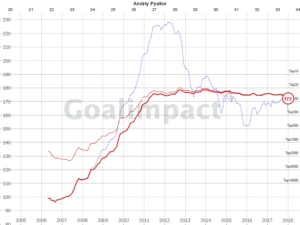
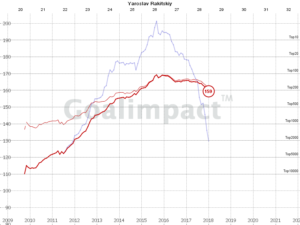
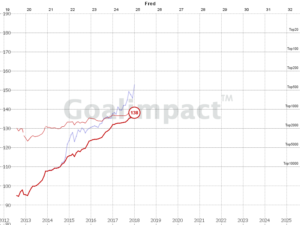
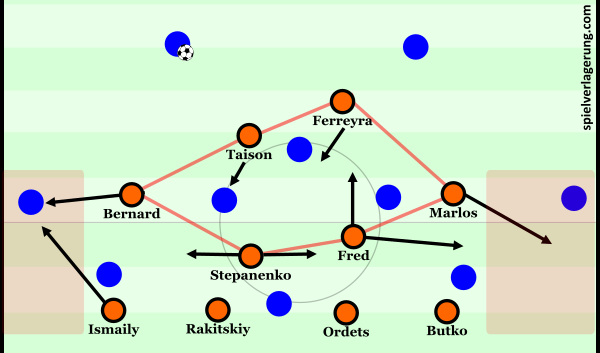
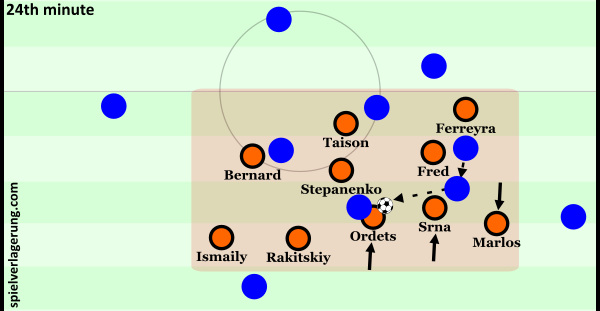
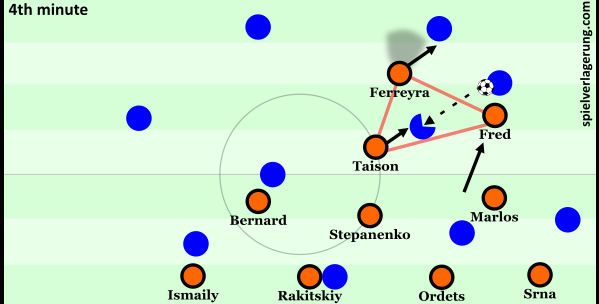
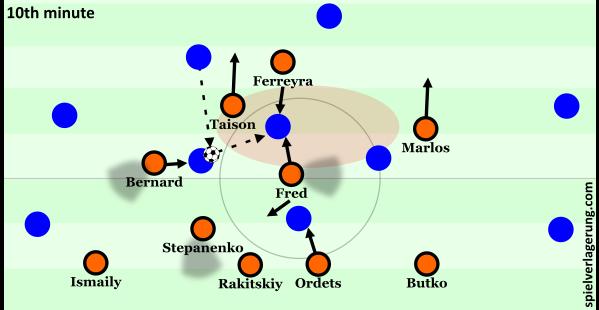
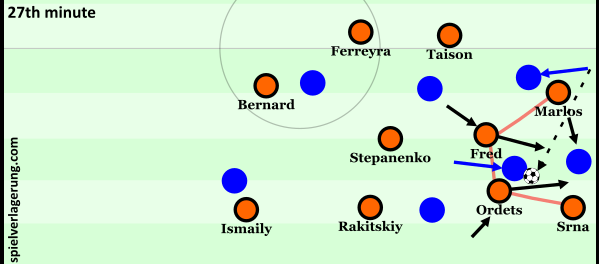
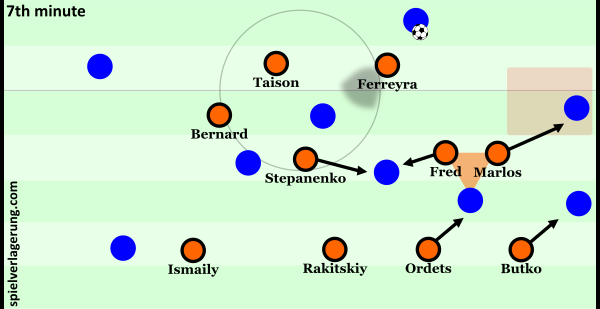
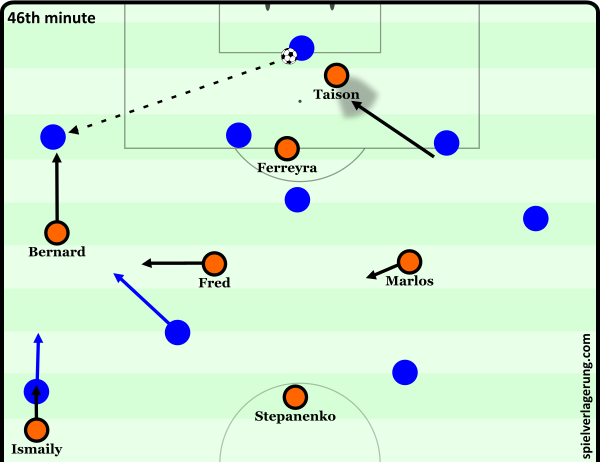
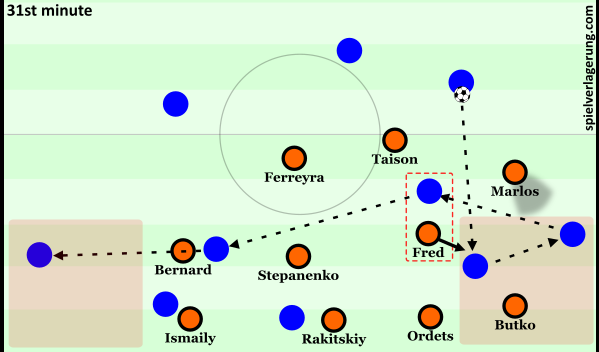
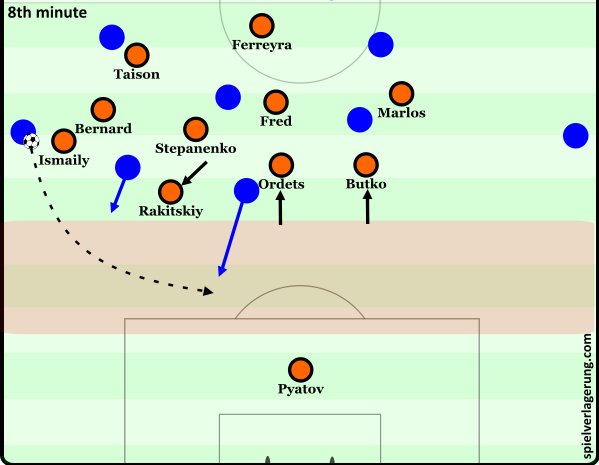
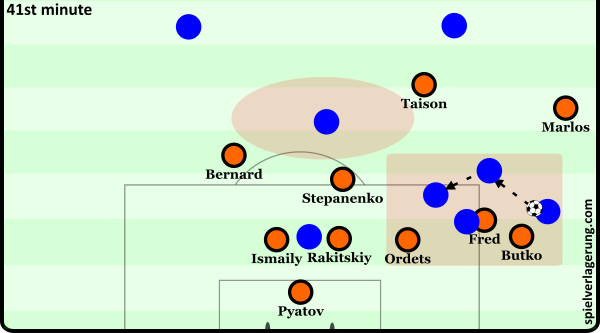
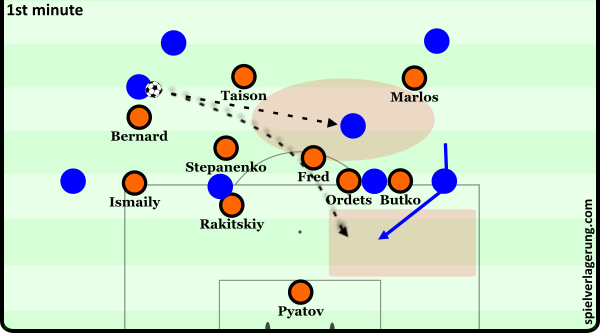
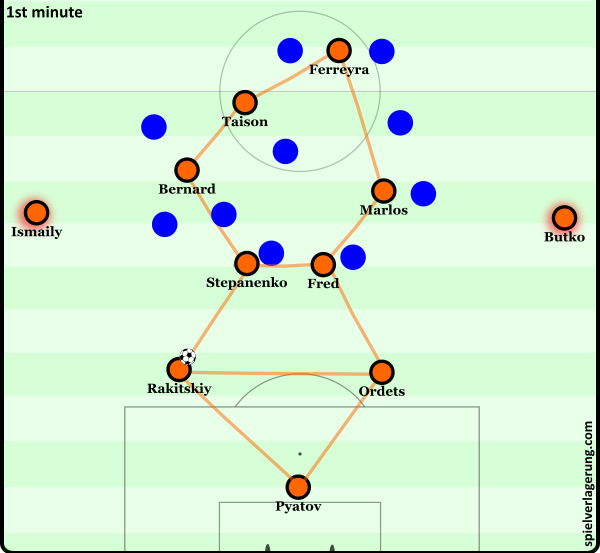
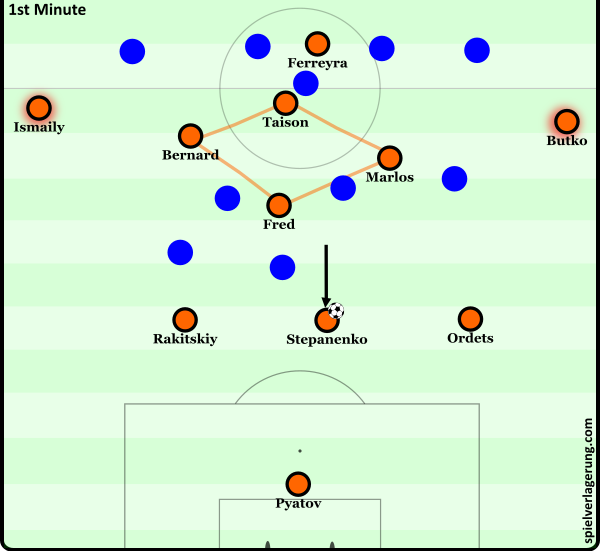
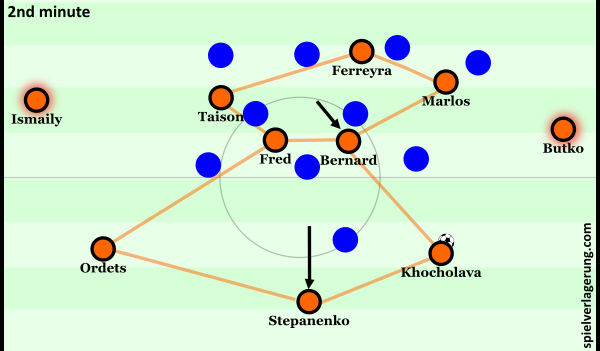
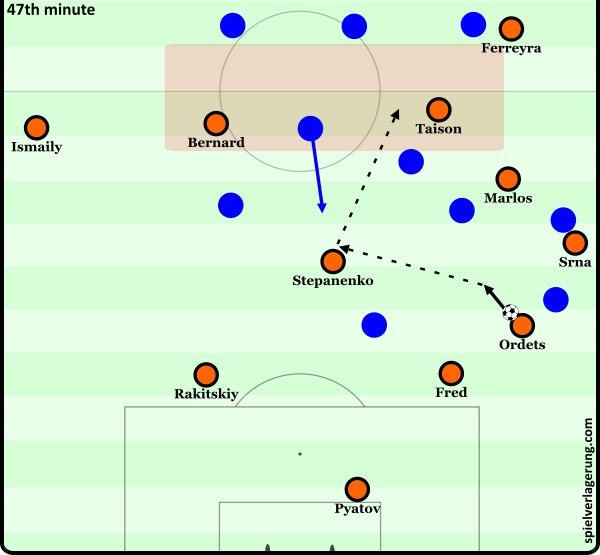
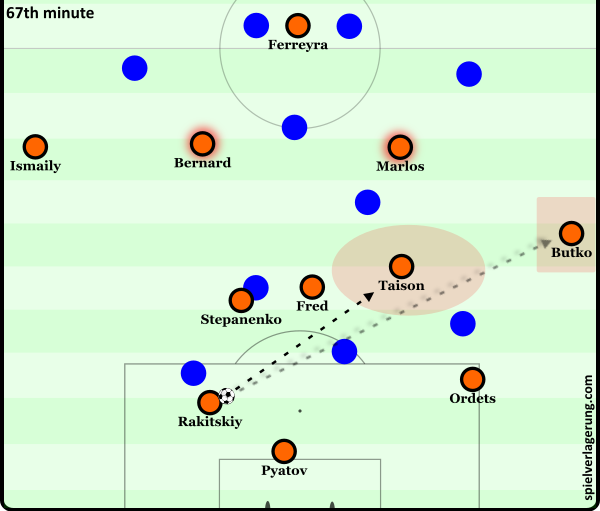


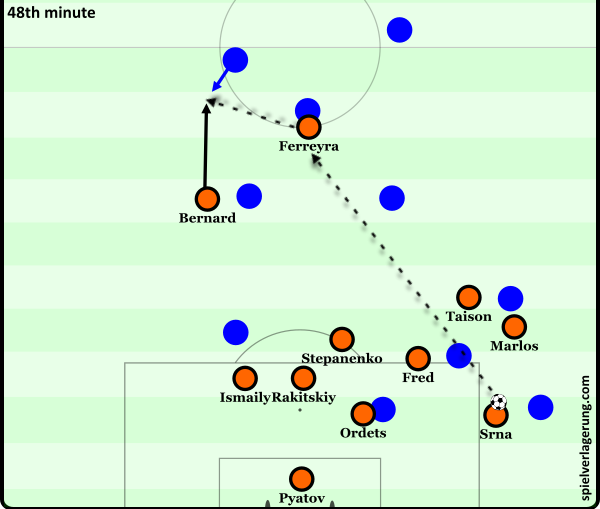
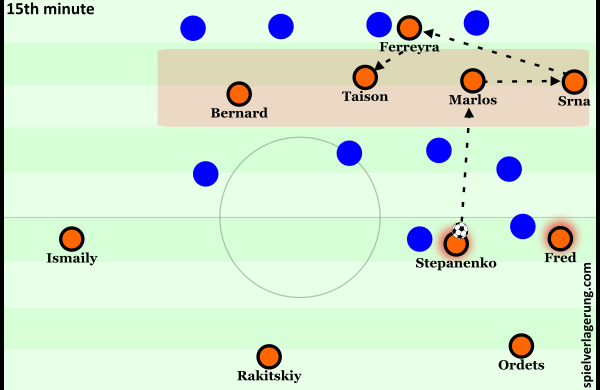
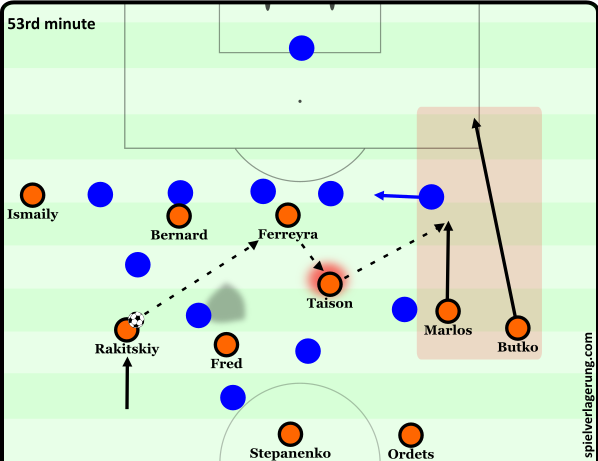
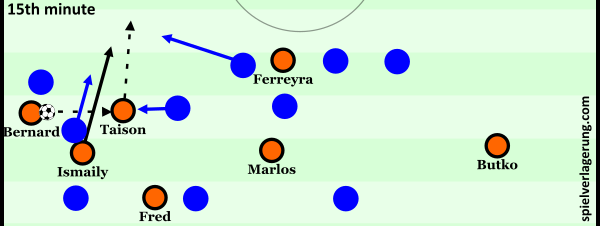
1 Kommentar Alle anzeigen
Read More Here December 1, 2022 um 1:24 pm
Thank you for any other wonderful post. The place else may anybody get that type of information in such an ideal way of writing? I’ve a presentation next week, and I am at the look for such info.